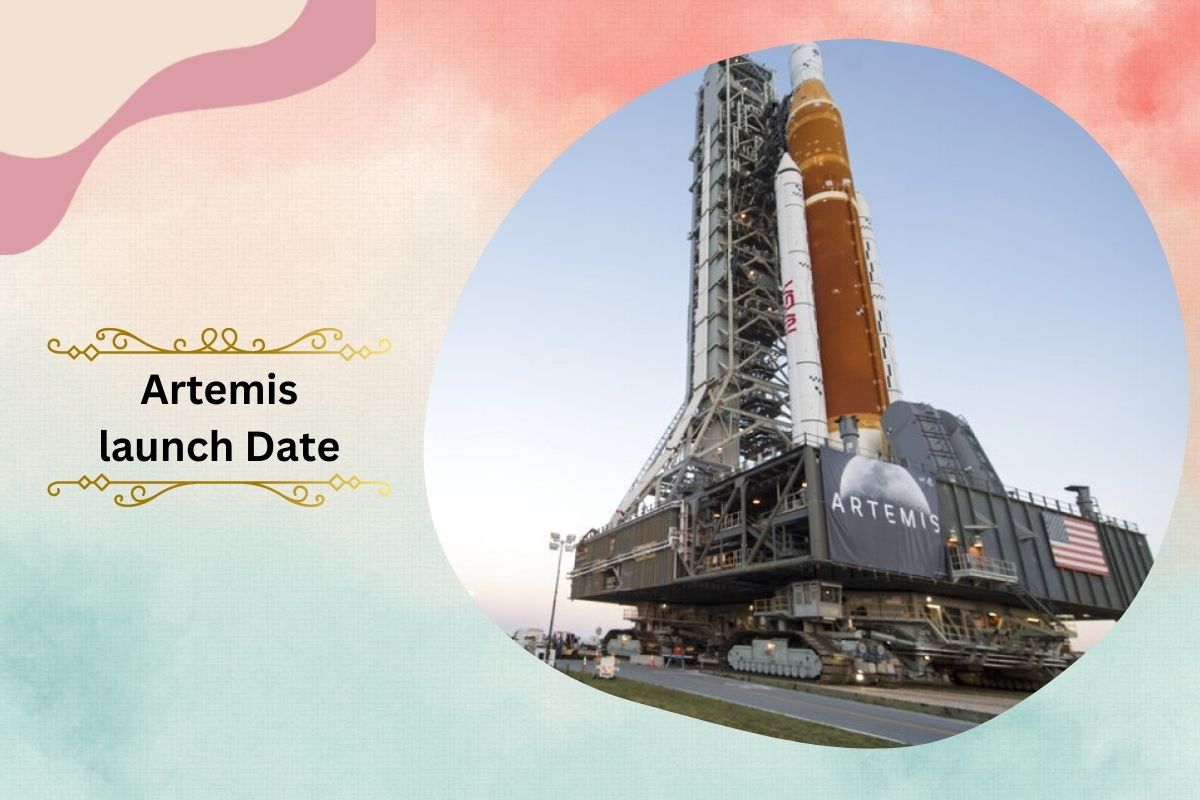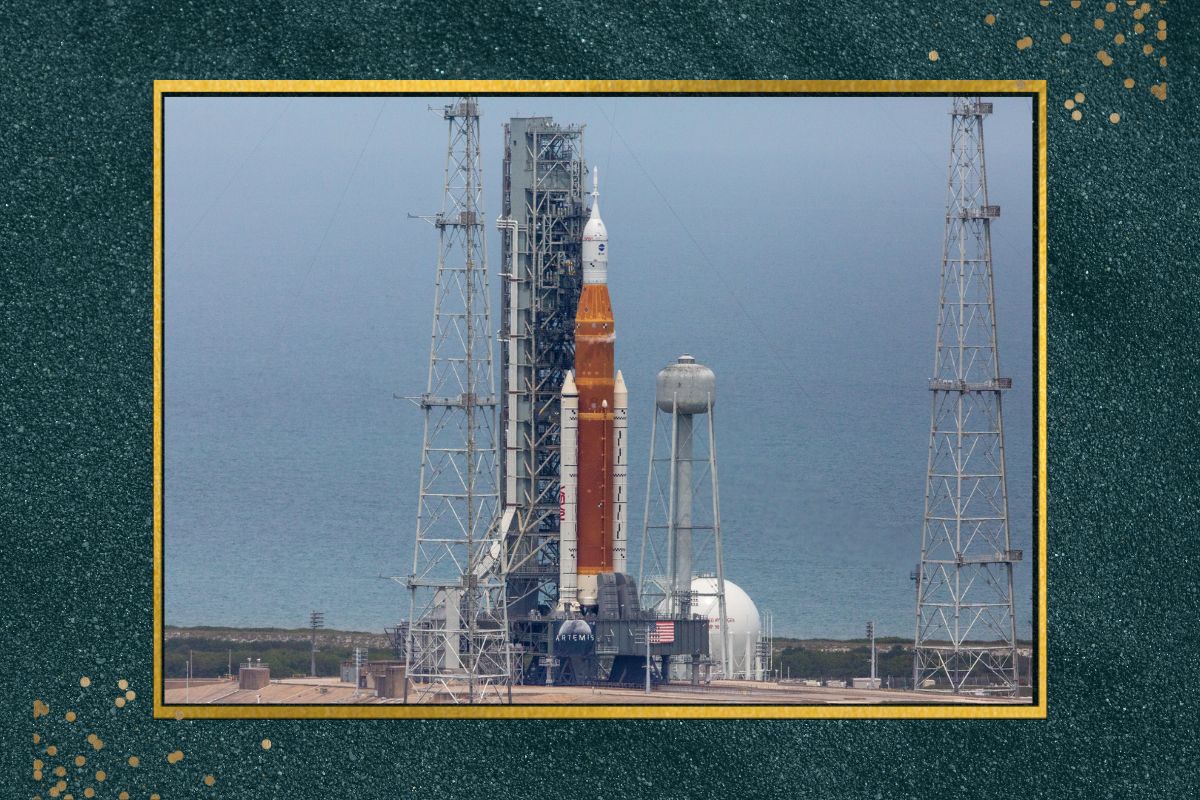The Artemis missions are part of NASA’s plan to “land the first woman and first person of colour on the Moon,” among other goals, as well as to study the lunar surface and prepare for sending humans to Mars. Learn more about this exciting new phase in human spaceflight.
What Is NASA’s Artemis Programme?
NASA’s Artemis programme is a set of ongoing space missions.
Three Artemis missions are now underway, with the first, an unmanned test flight around and beyond the Moon, scheduled for launch no earlier than late September 2022. (postponed from 29 August and 3 September). A crewed mission called Artemis 2 will break new ground in human space exploration by travelling past the Moon. Artemis 3 is a mission that will put a woman and a person of colour on the Moon for a week to conduct research.
The United States Space Agency’s Artemis 3 mission will be the first manned Moon landing mission since Apollo 17 in 1972.
The Artemis space missions may be primarily concerned with lunar exploration, but NASA has far more ambitious long-term aims.
A future crewed mission to Mars is planned, and NASA plans to use the technology and data gained during the Artemis spaceflights to get there.
A new space station in lunar orbit and, eventually, a livable Moon colony are part of NASA’s ambitious “Moon to Mars” concept.
Why Is The Programme Called Artemis?
Goddess Artemis of the Moon is the mythical Greek twin sister of Apollo. Therefore, the connection to the mission that sent humans to the Moon for the first time 50 years ago is undeniable.
Meanwhile, the name Orion has been given to the upcoming crewed spacecraft. Orion is a well-known constellation, and in Greek mythology, he is Artemis’s hunting companion.
Why is NASA Going Back To The Moon?
NASA’s goal with Artemis is not merely to replicate the successes of the Apollo missions, but rather to permanently settle on the Moon. In other words, we need to look into the feasibility of setting up outposts both in lunar orbit and on the Moon’s surface, even though our immediate focus is on getting humans back to the Moon by the middle of this decade.

Key NASA mission objectives include:
- Equality: Mission to the Moon: putting a woman and a person of colour on the lunar surface is a top priority for NASA.
- Technology: One of NASA’s first major partnerships with private industry giants like SpaceX and Boeing is the Artemis programme.
- Long-term presence: Apollo 17 only spent three days on the moon’s surface, but Artemis plans to set a shop there so astronauts can spend weeks or even months there on future missions.
- Knowledge: NASA argues that the next set of missions will be able to gather samples from the Moon more strategically than during the Apollo era because more is known about the Moon now than 50 years ago (and technology has substantially evolved).
- Resources: The scientific and commercial potential of the Moon’s water and possible rare mineral resources is just beginning to be explored.
Want to Travel to the Moon? Come to Greenwich…
Has the Artemis Launch Been Delayed?
NASA’s original plan called for people to arrive on the Moon by the year 2024. However, the government assured the public in November 2021 that this deadline would be put back until no earlier than 2025.
However, NASA Inspector General Paul Martin has stated that this timeframe is likely to be pushed out to at least 2026.
This is the third stage of a long-term mission that began with the unmanned Artemis I journey around and beyond the Moon. The schedules for each of these endeavours are extremely aggressive.
How Will Nasa Get Back to the Moon?
The Artemis Moon Missions centre on four key features. The following are some examples of these:
Orion spacecraft
Orion is the command module that will carry the astronauts across space; it is equipped with life support equipment and shuttle interfaces.
Lunar Gateway
The Lunar Gateway is a compact space station in Moon orbit that will serve as a versatile launch pad for exploration of the Moon and beyond.
Once the Orion capsule has docked with Gateway, the astronauts will be able to board the lunar lander.
The Lunar Gateway, in contrast to the International Space Station (ISS), is designed to be a temporary outpost where astronauts can reside and conduct research. It will also be able to keep up with scientific investigations even when no humans are present on the moon.
This week the @NASAGoddard Instrument Field Team is testing instruments and conducting science experiments in one of the most moonlike places on Earth. Follow along with their trip over at @NASAExpeditions! https://t.co/cfGNgvitaL
— NASA Moon (@NASAMoon) September 14, 2022
NASA’s Lunar Gateway design is a collaborative effort with international partners like the European Space Agency.
Moon Landing Module
From the Lunar Gateway, cargo and people will be transported to the lunar surface via lunar landing vehicles. NASA and private businesses are developing a human landing system (HLS) and a fleet of robotic and cargo vehicles.
In contrast to Apollo’s Lunar Module, which was only meant to be utilised for a single return trip to the Moon’s surface, the landing systems for the Artemis missions will be reused for several landings.
Space Launch System (SLS)
This unmanned mission is a thorough test of the Space Launch System (SLS) and the Orion module and was formerly known as Exploration Mission-1.
The Orion module will separate from the SLS after liftoff from the Kennedy Space Centre in Florida and go toward the Moon. In its orbit, it will pass within 100 kilometres of the Moon’s surface and then proceed for another 64,373 kilometres. After a mission expected to last 42 days, the module will splash down in the Pacific Ocean close to California.
There will be a wide variety of technological and scientific experiments on board. These will help us learn more about the moon, advance technology, and investigate cosmic rays.
Additionally, a “moonikin” named Campos will be on board, a mannequin outfitted in the same First-Generation Orion Crew Survival System spacesuit that the actual astronauts will use on Artemis 2 and 3. The entire surface of Campos will be covered in sensors to collect information about the potential hazards that human crew members may face during space travel.
Artemis 2
For the Artemis programme, this crewed spaceflight represents a historic first, sending humans farther into space than they have ever gone before.
The four-person crew, propelled into space by the SLS rocket, will then pilot the Orion module 7402 km beyond the Moon’s far side, perform a lunar flyby, and then return to Earth. Eight to 10 days are allotted for the mission, during which time useful flight test data will be gathered.
Artemis 3
The next Apollo 17 mission will be the last to land on the Moon.
Drawing from the success of Artemis 2, four people will spend 30 days in orbit aboard the Orion module, which will dock with the Lunar Gateway. Then, two astronauts will use the human landing system to descend to the lunar south pole, an area never before explored by humans.
The astronauts are scheduled to spend a week on the surface, during which time they will conduct a number of scientific research and collect samples of the Moon’s water ice, which was discovered for the first time in 1971.
Artemis 4, 5, 6 And More?
NASA has already granted contracts for boosters on rockets up to Artemis 13, thus while they are prioritising Artemis missions 1–3, they are also planning ahead for future projects.
NASA hopes to continue sending astronauts into space on a yearly basis if the first three missions are successful. A possible plan for the future involves astronauts setting up shop on the lunar surface so that they can use it as a hub on their way to the Red Planet.
NASA announced in January 2022 that casting and assembly of Artemis 4’s solid rocket booster had begun.
Meanwhile, in June of 2022, Airbus announced that they had received the module’s framework for the fourth Artemis mission’s lunar orbital habitat.
Who Will Be Part of the Artemis Crew?
In 2020, NASA began actively seeking new astronauts to join the crew and bring mankind to new worlds like the Moon and Mars.
All applicants have to be citizens of the United States with advanced degrees in science, technology, engineering, or mathematics (science, technology, engineering or maths). The next round of applications concluded on March 31, 2020, and the new “Artemis Team” will be announced in December of that year.
In August 2022, however, NASA declared that all 42 of its astronauts, not only the 18 on the Artemis Team, would be flight eligible.
The crew of Artemis 2 will likely be chosen in the near future.
While no humans will be aboard Artemis 1, two very special passengers, Shaun the Sheep and Snoopy, will be making the journey.
Follow digitalnewsexpert.com for more future updates.


Leave a Reply